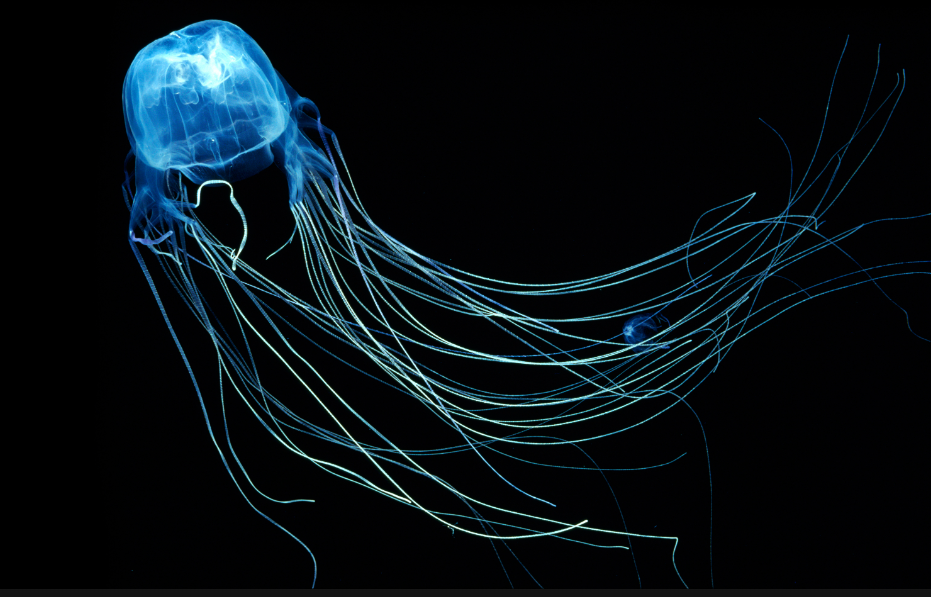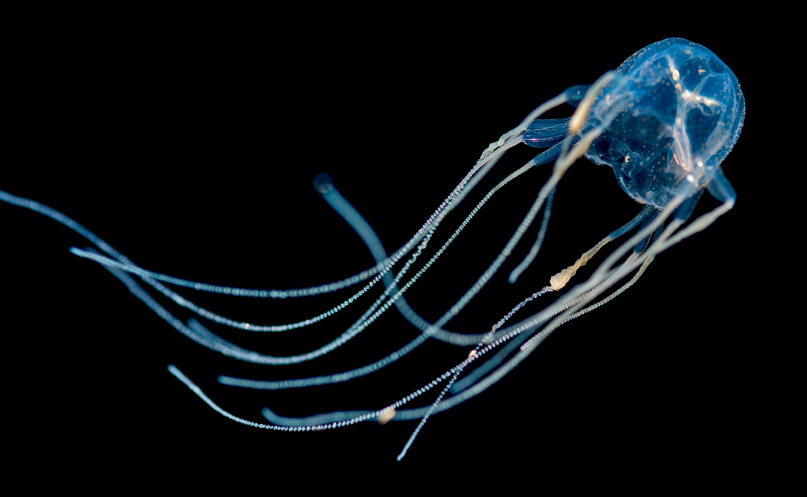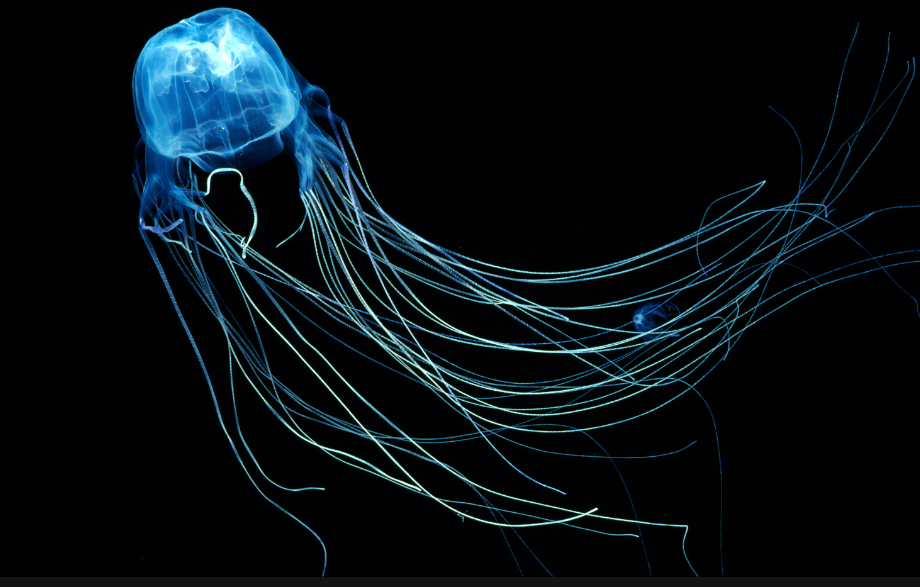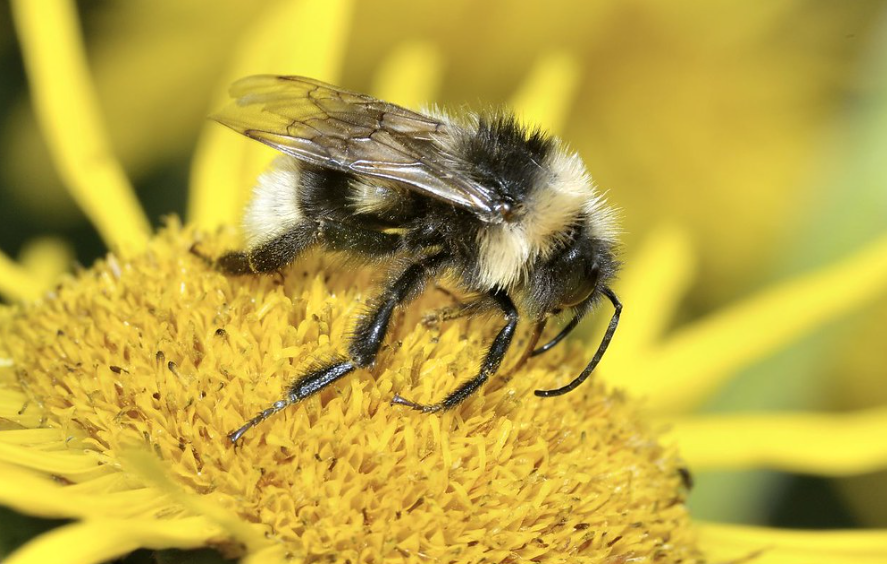
Quick Top 10 Facts about Box Jellyfish
| SCIENTIFIC NAME | Cubozoa (Box Jellyfish) |
| CLASSIFICATION | KINGDOM: Animalia PHYLUM: Cnidaria CLASS: Cubozoa ORDER: Cubomedusae FAMILY: Chirodropidae GENUS: Chironex, among others |
| SIZE | Up to 30 cm (12 inches) in bell diameter, with tentacles up to 3 meters (10 feet) long |
| HABITAT | Tropical and subtropical waters of the Indo-Pacific and Northern Australia |
| DIET | Carnivorous – feeds primarily on small fish and invertebrates |
| SPECIES | Several species within the class Cubozoa, with the most famous being Chironex fleckeri |
| COUNTRY | Found in coastal waters of Northern Australia, Southeast Asia, and parts of the Pacific Ocean |
| GESTATION PERIOD | Box Jellyfish reproduce through external fertilization, with no gestation period (eggs hatch externally) |
| LIFE SPAN | Average lifespan is about 1 year, but varies depending on environmental conditions |
| CONSERVATION STATUS | Not listed as endangered, but populations can be affected by water pollution and climate change |
Amazing Facts About Box Jellyfish
1. One of the most venomous creatures on Earth
The Box Jellyfish is known for its highly potent venom, which can cause heart failure in just a few minutes if untreated.
2. Their tentacles are equipped with thousands of stinging cells
The tentacles of a Box Jellyfish contain thousands of specialized cells called nematocysts that release venom upon contact with skin.
3. They can move quickly
Box Jellyfish are among the fastest swimming jellyfish species, able to reach speeds of up to 4 knots (about 7.4 km/h or 4.6 mph).
4. They have 24 eyes
Box Jellyfish have four clusters of eyes, each containing six eyes, making a total of 24 eyes. Their vision is thought to be used to navigate through the water.
5. They are primarily solitary creatures
Unlike other jellyfish species that often form large blooms, Box Jellyfish are typically solitary and only come together for mating.
6. Box Jellyfish are excellent hunters
They use their highly developed eyes and their speed to hunt small fish and invertebrates, which they paralyze with their venom.
7. Their sting can be fatal to humans
The venom of the Box Jellyfish is strong enough to cause cardiac arrest in humans, making it one of the deadliest animals in the world.
8. They are transparent and hard to see
Their transparency makes them difficult to spot in the water, which can increase the risk of accidental stings.
9. Box Jellyfish can be found near shorelines
They typically inhabit shallow coastal waters, making them particularly dangerous to swimmers and divers in affected areas.
10. Anti-venom exists but must be administered quickly
In the event of a sting, anti-venom and prompt medical treatment are essential, as the venom can cause death in under 3 minutes if untreated.
Box jellyfish are fascinating creatures found in various oceans of the world
Box jellyfish, or Chironex fleckeri, as they are officially named, are fascinating creatures that are mostly found around the coasts of the Pacific and Indian oceans. These jellyfish are characterised by their distinctive bell-shaped box and their long tentacles, which may reach a maximum length of 10 feet. Their translucent bodies let them flawlessly blend in with the surrounding water, making them difficult to spot.
Mechanisms of their sting and their effects on humans
One of the most intriguing aspects of box jellyfish is their deadly nature. They have specialist cells called nematocysts, which are located on their tentacles. These nematocysts inject their poison into their victims as soon as they come into contact with them. In addition to causing terrible pain and tissue damage, box jellyfish venom is very poisonous and may even be fatal to humans. Swimming should be done carefully in areas where box jellyfish are known to be prevalent.
Unique hunting or predation techniques used by Box jellyfish
Despite their potential for damage, box jellyfish are essential to marine ecosystems. They are scavengers that eat prawns, small fish, and other invertebrates. By controlling the numbers of certain prey species, box jellyfish help maintain the balance of the marine food chain. Additionally, their translucent bodies protect them from predators since they are difficult to notice in the water.
importance of understanding their facts and characteristics
Box jellyfish are unique creatures that are intriguing to study. Their translucent bodies, venomous tentacles, and bell-shaped boxes make them intriguing—and sometimes lethal. But they also have an important ecological role in maintaining the balance of maritime habitats. We need to understand and cherish these species in order to safeguard ourselves and acknowledge their importance to the ecosystem.

Fascinating facts about Box Jellyfish
Sea wasps, or box jellyfish, are an interesting and often misinterpreted marine animal. These jelly-like crustaceans are well-known for their distinctive look and strong venom. Box jellyfish are fascinating marine animals found all over the globe. Even though they might be harmful when they sting, it’s crucial to remember that they are an essential part of marine ecosystems. We can appreciate the intricacy and variety of life in our seas more if we have a deeper grasp of these wonderful organisms.
Anatomy and physical appearance of box jellyfish
The bell-shaped body of a box jellyfish is translucent and often light blue in colour. Their bell, which sets them apart from other jellyfish species, is cube-shaped, thus their name. Tentacles may reach lengths of up to ten feet, and they can have up to fifteen of them. The hundreds of specialised cells called cnidocytes that make up these tentacles are in charge of delivering the poison to their victims.
Sting and potent venom possessed by box jellyfish
One of the strongest poisons in the animal world is the venom of box jellyfish. It has a mixture of peptides and proteins that may result in tissue damage, excruciating agony, and sometimes even death. Humans are more vulnerable to the dangers of their sting, so if you are stung, get medical help right away. Depending on the species, the sting’s intensity might vary; some are more poisonous than others.
Specific environmental conditions are required for survival of box jellyfish
Around the globe, box jellyfish may be found in warm coastal waters, especially in the Pacific and Indian Oceans. Though they may be found in deeper waters, they are most common in shallow areas close to the coast. During the warmer months, when they go closer to the coast to breed, they are most often seen.
Nutritional Diet, including the types of prey box jellyfish consumed
Plankton and tiny fish are the main food sources for box jellyfish. Its poison paralyses its target, which they then devour after capturing them with their tentacles. Even though they have a fragile look, box jellyfish are skilled predators that can render their prey motionless very rapidly.
life cycle of box jellyfish, including their different stages
There are several phases in a box jellyfish’s life cycle. Initially, they are microscopic larvae that drift in the water until they land on the ocean bottom and cling to a substrate. After that, they mature into polyps, which finally turn into mature jellyfish, or medusae. New larvae are created when fertilisation takes place in the water after the medusae discharge their eggs and sperm into it.

First-aid measures or treatments for box jellyfish stings
It is advised to use protective gear, such as a wetsuit, and to swim in designated safe zones while swimming in locations where box jellyfish are known to be present. It’s also a good idea to pay attention to any warning indicators or local authorities’ recommendations about jellyfish activity.
FAQ (Frequently Asked Questions) about Box Jellyfish
Q: What is a Box Jellyfish?
Ans: The Box Jellyfish, also known as Chironex fleckeri, is a highly venomous marine species found primarily in the waters of the Indo-Pacific region. Its cube-shaped bell and long, trailing tentacles distinguish it from other jellyfish. Box jellyfish are notorious for their painful and sometimes lethal sting.
Q: Why is it called the Box Jellyfish?
Ans: It is called the Box Jellyfish because of its cube-shaped (box-like) bell. Unlike other jellyfish, which have a more rounded or bell-shaped body, the box jellyfish’s bell is square, and it has four corners, each with a cluster of tentacles.
Q: Where does the Box Jellyfish live?
Ans: The Box Jellyfish is commonly found in the coastal waters of the Indo-Pacific region, including northern Australia, the Philippines, Thailand, and surrounding areas. It typically inhabits shallow waters, such as beaches and mangroves, but it can also be found in deeper areas of the ocean.
Q: What does the Box Jellyfish eat?
Ans: The Box Jellyfish feeds primarily on small fish, crustaceans, and other invertebrates. It uses its venomous tentacles to paralyze and capture prey. The venom quickly immobilizes the prey, making it easier for the jellyfish to consume.
Q: Is the Box Jellyfish dangerous?
Ans: Yes, the Box Jellyfish is one of the most venomous creatures on Earth. Its sting can cause intense pain, paralysis, and even death in extreme cases. The venom in its tentacles contains toxins that affect the heart and nervous system. Immediate medical attention is crucial in case of a sting.
Q: How big does the Box Jellyfish get?
Ans: The Box Jellyfish can grow to a bell size of up to 30 centimeters (12 inches) in width, with tentacles that can extend up to 3 meters (10 feet) long. Despite its relatively small bell size, its tentacles are long and capable of delivering a potent sting.
Q: How does the Box Jellyfish move?
Ans: The Box Jellyfish moves by contracting and relaxing its bell, propelling itself forward in a pulsating manner. Unlike other jellyfish, the Box Jellyfish has a relatively strong swimming ability and can actively move toward its prey or escape from threats.
Q: Can you touch a Box Jellyfish?
Ans: It is strongly advised not to touch a Box Jellyfish due to its venomous tentacles. Even if the jellyfish appears to be dead, the tentacles can still deliver a painful sting. Always maintain a safe distance from Box Jellyfish and be cautious when swimming in areas where they are known to inhabit.
Q: Are Box Jellyfish rare?
Ans: Box Jellyfish are not considered rare, but they are not always easy to spot. They are often found in coastal waters during certain seasons, particularly during the warmer months. While they do not always appear near beaches, they are a known hazard for swimmers in certain areas.
Q: Do Box Jellyfish have predators?
Ans: Despite their venom, Box Jellyfish do have a few natural predators. Certain species of large fish, such as the giant sunfish (Mola mola), are known to feed on jellyfish, including Box Jellyfish. Sea anemones and some species of crabs may also feed on juvenile jellyfish.
#BoxJellyfish, #ChironexFleckeri, #Jellyfish, #MarineLife, #OceanCreatures, #DangerousAnimals, #VenomousCreatures, #MarineBiology, #WildlifeOfTheSea, #DangerousMarineLife, #BoxShapedJellyfish, #JellyfishSting
Our sources and references about Box Jellyfish
1: Wikipedia – Box Jellyfish
2: National Geographic – Box Jellyfish
3: ABC Education – Box Jellyfish Facts
4: Smithsonian Magazine – Box Jellyfish


